Root Canal Treatment
Root Canal Treatment, popularly known as RCT, is one of the treatments we do to prevent extraction/ save your tooth from removing. Though you may replace your lost teeth with artificial ones, they cannot beat your natural teeth. Natural teeth are always THE BEST!
As the name suggests, RCT is the treatment of roots. Your tooth has two parts: a crown and a root. Within your tooth, there is a vital part. The vital part of the crown is called the pulp, which is encapsulated by the root canal. While front teeth have a single root, the back teeth have multiple roots. Every root has a root canal.
When is RCT needed?
Root Canal Treatment, popularly known as RCT, is one of the treatments we do to prevent extraction/ save your tooth from removing. Though you may replace your lost teeth with artificial ones, they cannot beat your natural teeth. Natural teeth are always THE BEST!
As the name suggests, RCT is the treatment of roots. Your tooth has two parts: a crown and a root. Within your tooth, there is a vital part. The vital part of the crown is called the pulp, which is encapsulated by the root canal. While front teeth have a single root, the back teeth have multiple roots. Every root has a root canal.
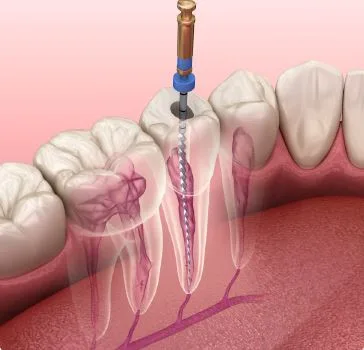
RCT Procedure
- To begin with, we examine your tooth and surrounding areas and assess the signs and symptoms.
- Then, we take the X-ray of the tooth to assess your tooth, root canals and plan the treatment.
- It is followed by a small injection for making the RCT pain-free. An injection may not be needed in all cases.
- We isolate the tooth by using a rubber dam, a small sheet that prevents saliva from disturbing the filling.
- After a few minutes, we start with removing the decay and reach the pulp. We clean the pulp and gain access to root canals.
- If needed, we take another X-ray with an instrument called file to assess the length of root canals.
- We clean, disinfect, and shape the root canals so that it holds the filling material right.
- If there is pus, we let it drain and allow the area to heal and call you for the next sitting. We prescribe antibiotics and pain reliever medicines.
- We inspect the tooth if it’s healing right and move ahead with the filling.
RCT is also possible in a single sitting, especially when there is no infection.
- We fill the root canals with a filling material called gutta-percha. We take a suitable size gutta-percha cone, roll it with a binding cement, coat the inside of root canals with the binding material and place the cone. We aim to completely seal the root canal by placing more gutta-percha cones of smaller sizes.
- Then, we cut the excess gutta-percha cones from the canal and seal the ends. Post which, we fill the pulp cavity with a suitable filling material.
- The next and crucial step is to place a crown/ cap for the RCT treated teeth. If we do not place a crown, RC treated teeth will fracture, and RCT will fail. We prepare your tooth so it can take the crown. We do a suitable shade selection for the crown and place it with bonding cement.
- We use post and core if your tooth is weak and is not strong enough to hold the filling.
After RCT, do not have food till the numbness goes off so that you do not bite your tongue or cheeks. Once the anaesthesia goes off, you can have soft foods that do not need much chewing.
Till you get the crown for RC treated tooth, do not use that tooth for chewing or biting hard food. Make sure you are gentle while brushing too. Follow your dentist’s instructions and get the crown as soon as possible.
Why Choose Us?
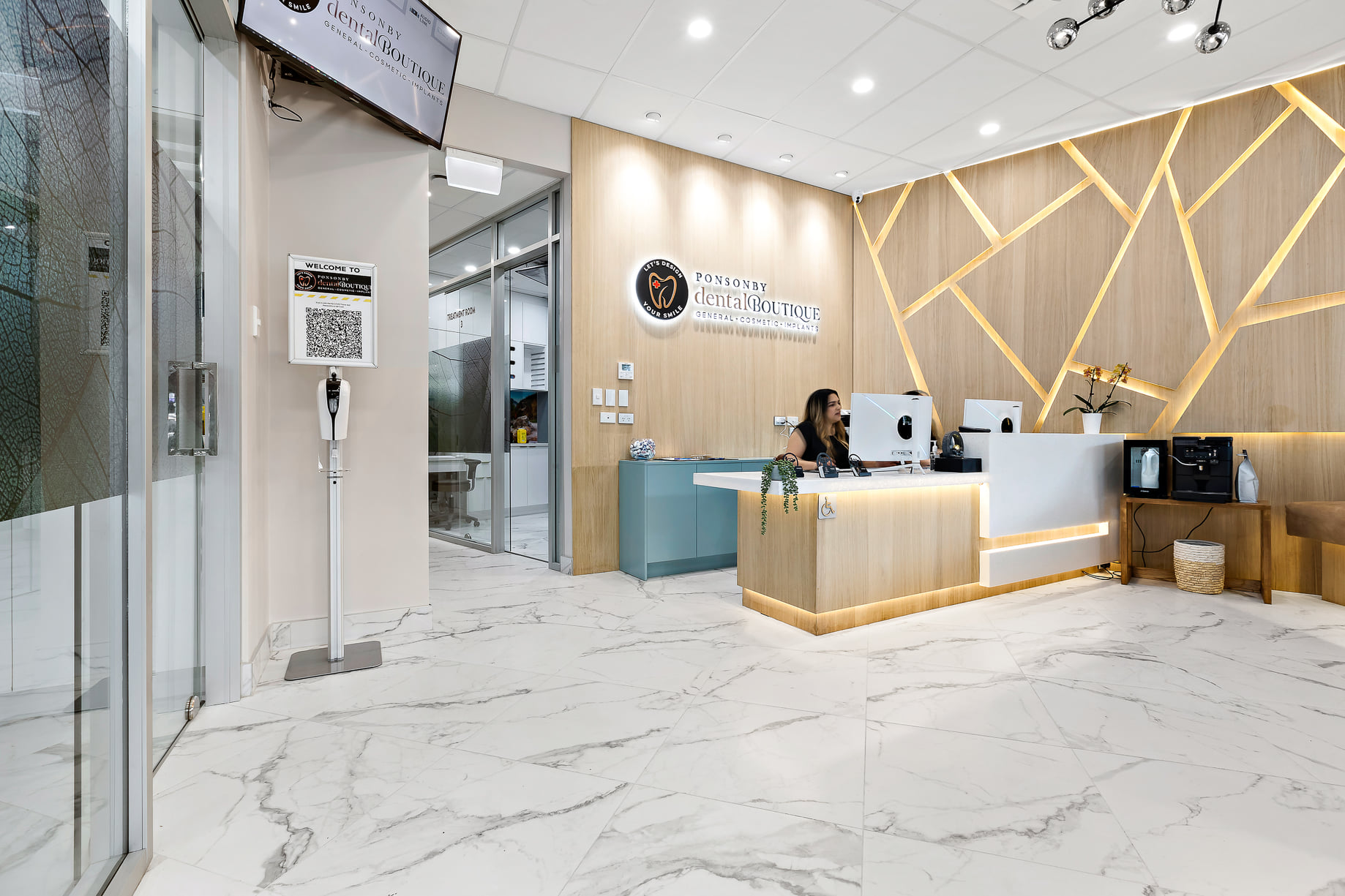
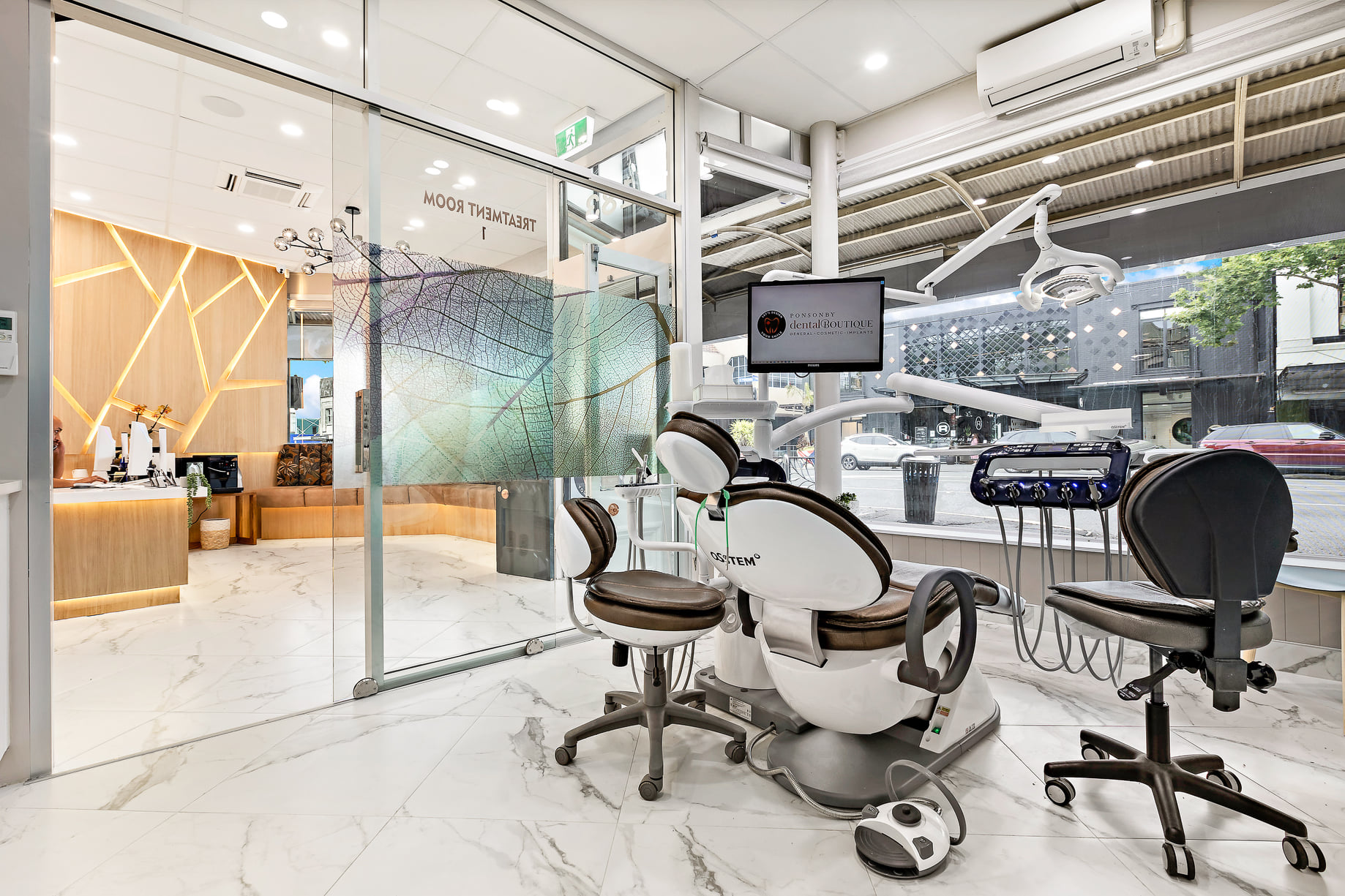
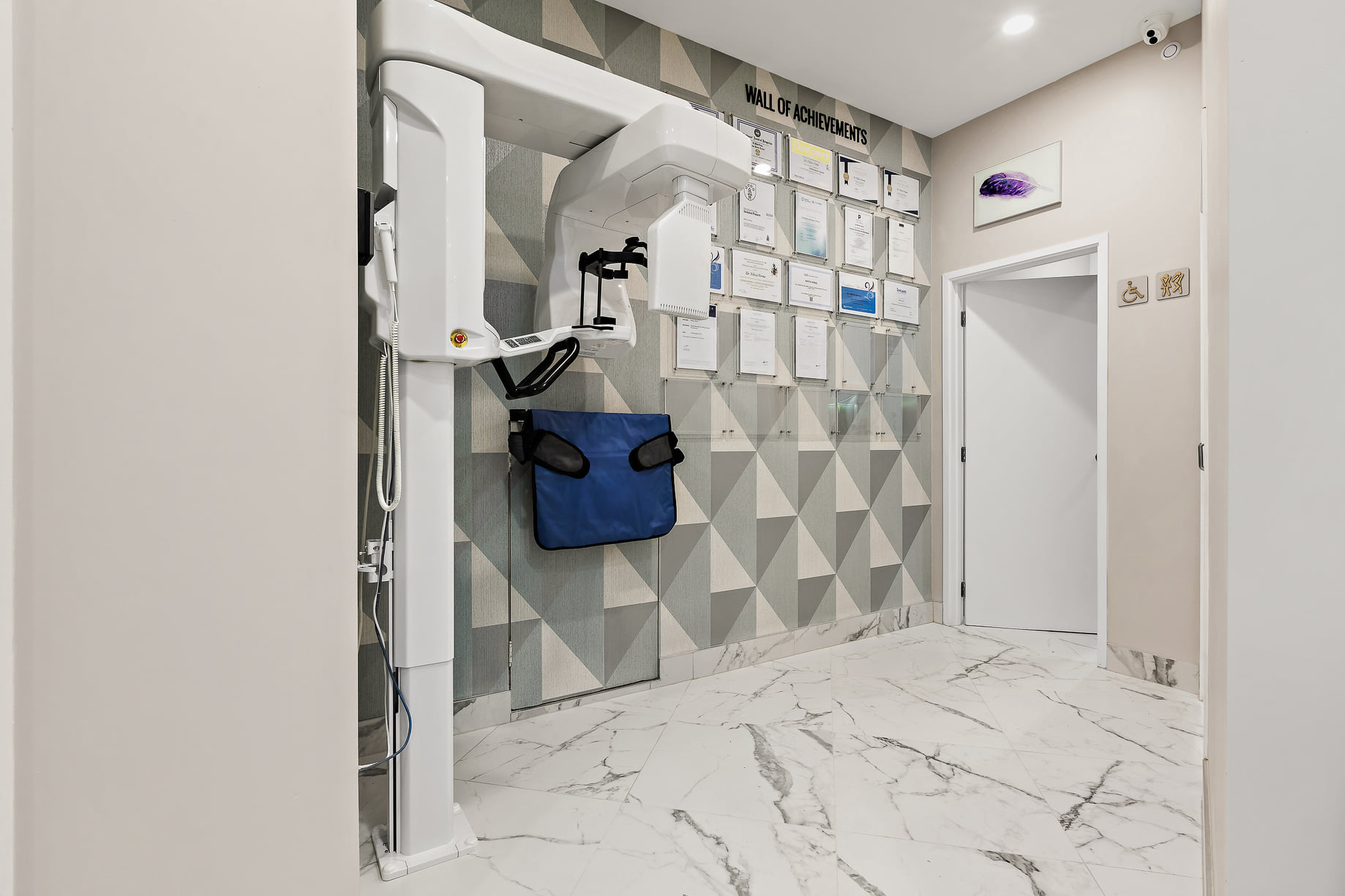
Ponsonby Dental Boutique is known for its experienced dental professionals, state-of-the-art technology, and a patient-first approach that ensures you receive the best care possible.
We plan and provide your treatment according to your personal preference and budget
We believe in honest work. We will always provide you with recommendations on necessary procedures. Therefore, you can trust to educate you to make informed decisions on the treatment which suits you.
Your comfort is our priority. Our friendly and trustworthy team create a pleasant environment. Our team will make your treatment as pain free as possible.
We use most latest technology for better diagnosis, treatment planning and treatment procedures.
We have affordable payment options- Short term finance options through Afterpay, Q card and Long term finance option with long term Q card Finance are available.
You can also pay with payment methods below.


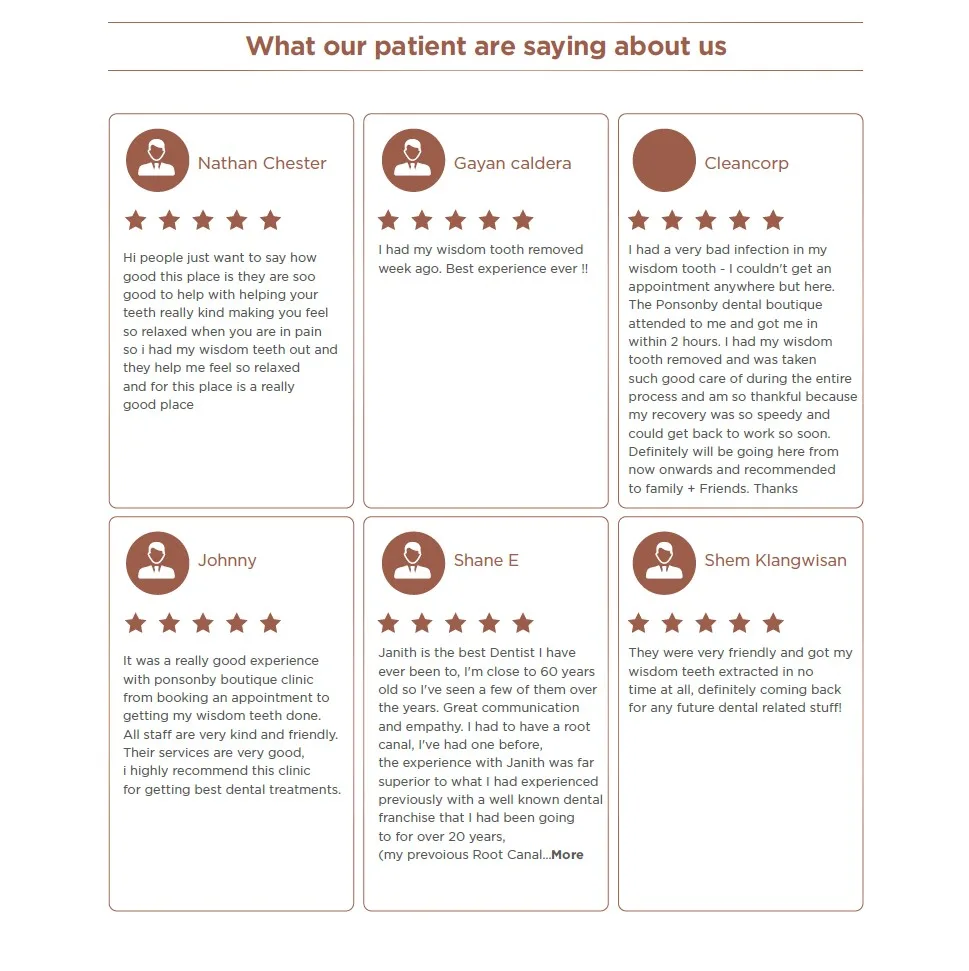
Book your appointment with our expert team today
Frequently Asked Questions On Root Canal Treatment
The words “root canal” strike fear into the hearts of many dental patients. However, there’s really no need to be afraid! Root canals are a common, safe, and standard procedure that puts an end to your pain and discomfort.
Here, we will answer some of the most commonly asked questions about root canal therapy.
Is a root canal painful?
Perhaps, the most common myth about root canals is that they are extremely painful. In modern times, this simply is not true. Thanks to technological advances and present-day anesthetics, getting a root canal feels similar to having a cavity filled. Anyone who has ever gotten a dental filling knows these are not painful!
In fact, a root canal actually marks the end of your discomfort. After all, an infected tooth is very painful. The whole point of a root canal is to remove this infection.
Do I need a root canal if my tooth doesn’t hurt?
If you need a root canal, it’s because your tooth is severely decayed, and there is an infection within the tooth’s pulp. Failing to treat this infection often results in an abscess, bone damage, and extreme pain. The infection can also spread to your other teeth. Consequently, it is imperative to proceed with the root canal even if your tooth doesn’t hurt (yet).
Waiting until you’re in pain to have a dental procedure (or visit your dentist) is a bad strategy. Most oral health conditions do not cause pain initially. The longer you wait, the worse the damage will be. You may end up needing multiple root canals instead of just one.
Will I lose my tooth?
A root canal is not a tooth extraction. The aim of root canal therapy is to remove the infection while preserving your natural tooth. So, no, you should not lose your tooth.
That being said, not all root canals are successful. Sometimes, the dentist will not be able to save your natural tooth, and you will require a tooth extraction.
Does a root canal weaken my tooth?
By removing the inner section of the tooth, its overall structure is weakened. However, dentists reinforce the tooth with dental restorations (like a dental crown or onlay) to combat this issue. Your tooth may not be as strong as it was originally, but you can still chew, talk, and use your mouth normally.
Is a root canal better than a tooth extraction?
Despite modern advancements in tooth replacements, there is no true substitution for your natural tooth. Consequently, tooth extraction should not be on the table except as a last resort. If it’s possible to save your natural tooth, you should choose to do so. Even after a root canal, your natural tooth will last a lifetime.
You can lose bone density in your jaw after having a tooth pulled. This can then lead to changes in facial structure. Plus, tooth extractions are more expensive than root canals. The recovery time is also much longer.
How long is the root canal procedure?
Most root canals are completed in a single trip to the dentist. The procedure takes between thirty minutes and two hours, depending on the severity of the infection.
However, if the infection is particularly bad, you may need to come in for two or more appointments.
Is it normal to feel pain after a root canal?
It’s normal to feel some discomfort, sensitivity, and soreness after your root canal procedure. This tenderness can last several days as the tissues surrounding the surgery site heal. Over-the-counter medication can ease any feelings of discomfort.
That being said, these uncomfortable sensations can sometimes persist for a few weeks. If you feel severe pain or pressure for more than a few days, you should contact your dentist. Additionally, monitor yourself for signs of visible swelling inside or outside the mouth. This could mean that the infection is recurring.
Should I worry about infection after the procedure?
Although we do not recommend worrying, we do suggest that you monitor your recovery. Severe pain, swelling, and fever could point to an infection.
What should I expect post-procedure?
It will take 2-4 hours for the local anaesthetic to wear off after a root canal. You shouldn’t eat anything until the numbness is entirely gone. Even then, you need to eat carefully. Choose soft foods that don’t require a lot of chewing and avoid hot food and drinks. Chew slowly.
You should continue opting for softer foods (and chewing on the opposite side of your mouth) for the first few days after your procedure. As we mentioned above, you will likely experience tenderness around the surgery site for several days.
It’s still important to keep up with your oral hygiene routine, even during your root canal recovery. Brush gently around sensitive areas. You should avoid flossing on either side of your temporary filling or crown.
What is the normal root canal recovery time?
Your mouth will gradually heal over a week or so. The permanent crown or filling is placed a few weeks after the root canal. Following that, you should be able to eat and talk freely without discomfort.
Root Canal Therapy At Ponsonby Dental Boutique
Choose Ponsonby Dental Boutique for your root canal therapy. With more than 15 years of experience in the dental industry, our team is ready to impress you with our quality care and amazing service.
We are available to answer any questions that you may have about your upcoming root canal procedure.
Let’s Make Things Happen
Regular checkups allow dentists to identify and address potential problems before they become serious issues. Through professional cleaning and examination, plaque and decay can be removed, reducing the risk of cavities, gum disease, and other oral health issues.
“We are here to help you to keep good healthy fresh smile. Every one deserve to have beautiful smile.”
Dr Janith
Principal dentist



